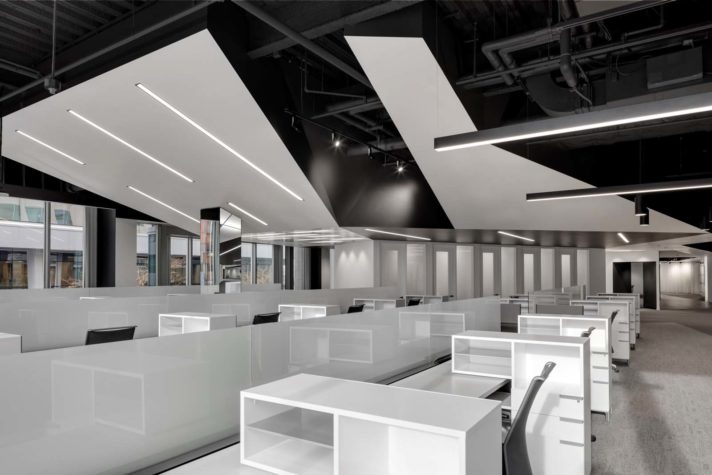Erik Milles of Reflex Lighting Group on Lighting Communities
Reflex Lighting Group, a lighting solutions provider based in the northeast, recently expanded into Maine. Erik Milles, a mechanical engineer and lifelong resident of the state, has recently been assigned to provide lighting specification support for residential and commercial projects in Maine. MH+D Inside Out talks to him and Daryl Swanson, director of marketing, on how appropriate lighting can transform a space and why they believe corporations should give back to their communities.
Q. How does color temperature affect a space?
Erik: Color temperature ranges from about 1800 to 5000 Kelvin in the commercial world. If you’re talking about a romantic restaurant, the lighting may reach sub-3000, which will have warm, rich, yellow light. In education buildings, hospitals, and offices, you’re going to see more of a brilliant, bluish-white color, which is usually around 4000 Kelvin. It’s been scientifically proven that brighter, blue-tinted sources of light make people more alert and helps them find more energy and a general sense of happiness. Higher color temperatures mimic natural light.
Q. How do you decide which type of lighting is best for a given space?
Daryl: There is an art behind lighting specification and design. When architects plan and shape a space, we’re collaborating with them to create the vision and environment they are trying to create. Every building has a story now. Even commercial spaces are becoming interactive, so it’s important to be able to play with the light to create the desired concept.
Erik: Half of lighting specification isn’t even necessarily just about the light, but the fixture itself. We have a cast of wonderful manufacturers that can bring a multitude of different moods or feelings together.
Q. How do you come to understand the story that clients want to tell, and how do you help them tell that story?
Erik: As lighting experts, it’s our job to come and fill the gaps where we can with architects, engineers, and lighting designers. We observe the space that these people have envisioned. In a sense, we get the opportunity to implement lighting solutions that best maximize their story.
Daryl: Using our capabilities to understand the intent of the design needs to be, we work to connect all the pieces and create a seamless process. We’re constantly training ourselves on our manufacturers, as well as new products and trends within the industry.
Q. You recently got involved in a project to design a domestic violence center in Portland. Can you tell me about that?
Erik: A few months ago, we decided to get involved in a full retrofit of a domestic violence center that interior designer Liz Berle is managing. We’re currently working with several manufacturers to donate fixtures for a room in the house, and we hope to do more in the future. It makes me proud knowing that this project can make a real difference in Portland.
Daryl: Reflex Lighting is one of those companies that understands the value of giving back. We want to be the light within our community.






